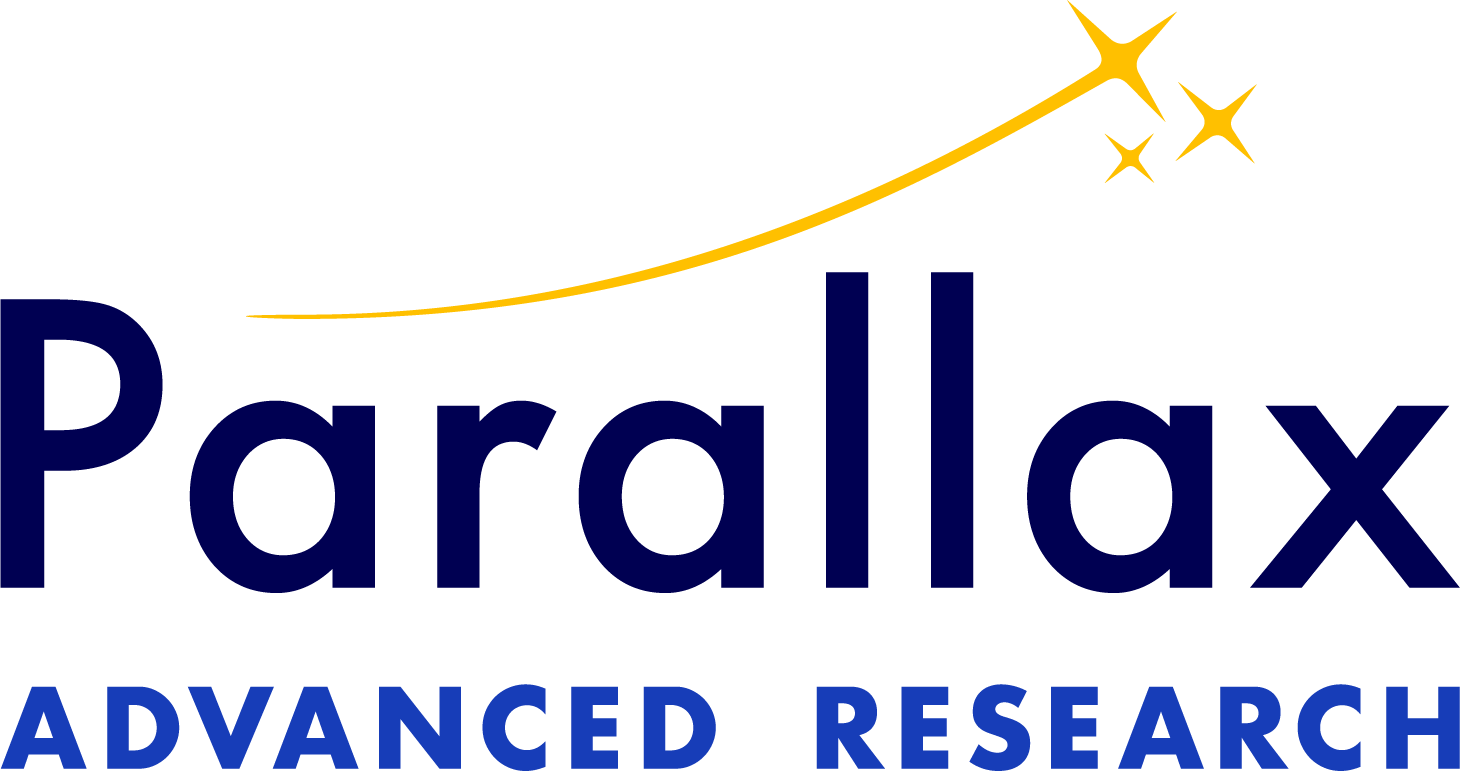CLEARED AS AMENDED on 04 Apr 2022, Case Number AFRL-2022-1584
Beavercreek, Ohio – Scientists at Parallax Advanced Research are working on several aspects of human-machine teaming (HMT) sponsored by the Air Force Research Laboratory. HMT studies where humans meet technology, how they interact with it, what kind of errors occur, and how humans perceive what technology is doing. Parallax’s research is focused on intelligence surveillance reconnaissance (ISR), which is critical to military operations. Broadly, the Parallax HMT team works with developers and customers to analyze decision-making, visual-search categorization, and information integration to improve ISR analyst performance, promote effective human-machine teaming, and reduce cognitive workload.
Parallax Advanced Research Director of Cognitive Research, Dr. Mary Frame, works on the human elements of HMT. She answers questions such as how analysts make decisions, remember things, and represent knowledge and information. Applications of HMT are varied and complex. Using their research, Parallax scientists can model how people think and, when navigating the human-factors space, look at the applied environment in a real-world context.
“It's a vastly different kind of context, especially if you have a system, tools, or technologies that are supposed to help people do a task better. Maybe the technology needs to help people remember things that they did an hour ago, to do the next thing, and so on,” said Dr. Frame.
When scientists develop these technologies, they want to ensure that analysts are communicating effectively to develop sound intelligence products. Dr. Frame’s work analyzes human performance, workload, fatigue, and other factors to determine whether the technologies being used are helping or hindering analysts. If technology is a hindrance, the team looks for efficient and effective ways to fix the problem.
The research team also measures the technology against other parameters, such as accuracy and speed.
“A device or software might have all the bells and whistles and could be usable and helpful to the user, however, research is needed to assess whether it makes users better at their job or if it creates another issue. Does it help users do one part of their job but distract them from another? The research we do is meant to give deeper, richer feedback during the development process,” said Dr. Frame.
Measuring and assessing multiple factors ensures effective and efficient designs. Measurements are done in a real-world scenario where researchers keep the environment as realistic as possible and emulate the cognitive processes that go into the task.
“We try to have good visual fidelity. For example, if we can’t have access to classified information and we need to make an unclassified version of it, it still has elements that could be applicable to someone in a more sensitive environment,” said Dr. Frame.
HMT research is relevant to many different fields
Dr. Frame’s work has applicability across many fields beyond the Department of the Air Force. HMT research impacts engineering, health care, computer science, and every other field where humans work with computers to accomplish work. Building multi-disciplinary teams to do the work is critical to maintaining leadership, relevance, and cutting-edge research and development.
The Parallax research team leverages conferences to cross-pollinate ideas that help them stay ahead of the advancements of research in the field. Dr. Frame attends the Society for Computation in Psychology conference that looks closely at where humans meet automation in various capacities; the Psychonomic Society’s Conference that is a flagship conference in cognitive psychology and covers cognitive science, neuroscience, decision making, judgment, and memory representations, and Tagung experimentell arbeitender Psycholog (TeaP), a German conference geared for experimental psychologists who study areas relevant to cognitive and applied psychology.
“I gain knowledge of the theoretical cutting-edge, but a lot of scientists from that community are focused on the lab and don't really see the applications side of research. To them a visual search task is a ‘T’ embedded in a field of ‘L's’, and, to me, a visual search task is a guy dressed a little bit differently than everybody else and doing certain behaviors that blend in with everyone else,” said Frame. “Whenever I bring anything like that to a conference, they're extremely interested in how real it looks. When researchers see their paradigms, initially developed in a vacuum, translating successfully to the real world, they get excited and ask great questions.”
Dr. Frame gets good ideas for what to do next with this exposure to different perspectives.
###
About Parallax Advanced Research
Parallax Advanced Research is an advanced research institute that tackles global challenges by accelerating innovation and developing technology and solutions through strategic partnerships with government, industry, and academia across Ohio and the Nation. Together with academia, Parallax accelerates innovation that leads to new breakthroughs. Together with the government, Parallax tackles critical global challenges and delivers new solutions. Together with industry, Parallax develops groundbreaking ideas and speeds them to market.
About AFRL
The Air Force Research Laboratory (AFRL) is the primary scientific research and development center for the Department of the Air Force. AFRL plays an integral role in leading the discovery, development and integration of affordable warfighting technologies for our air, space and cyberspace force. With a workforce of more than 11,000 across nine technology areas and 40 other operations across the globe, AFRL provides a diverse portfolio of science and technology ranging from fundamental to advanced research and technology development. For more information, visit: https://afresearchlab.com/
